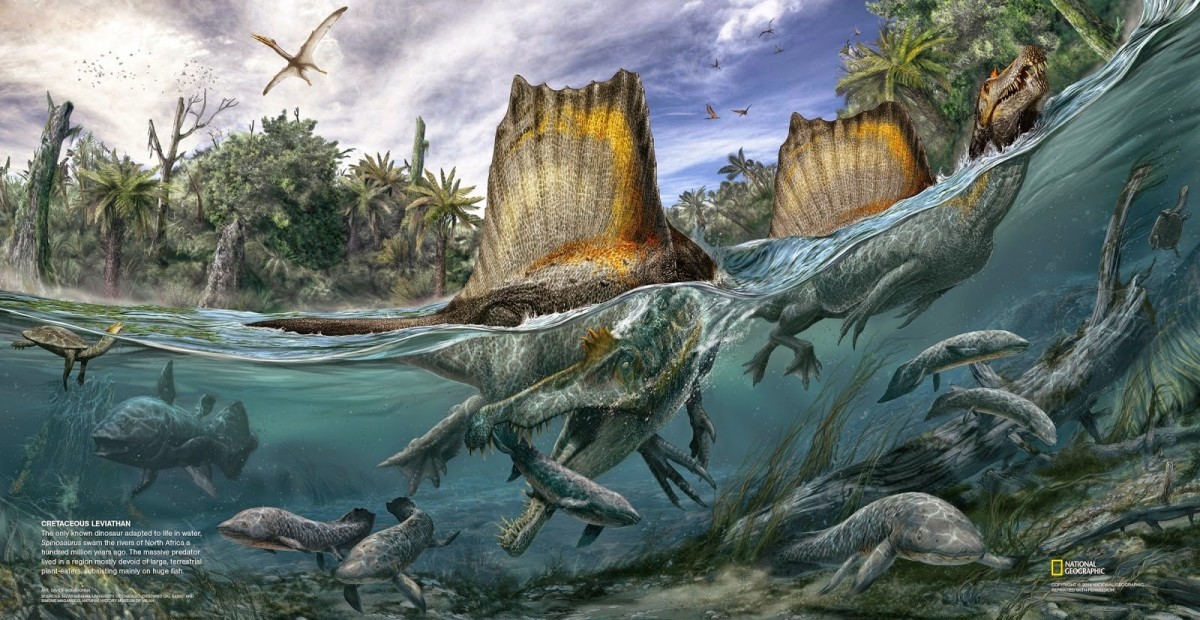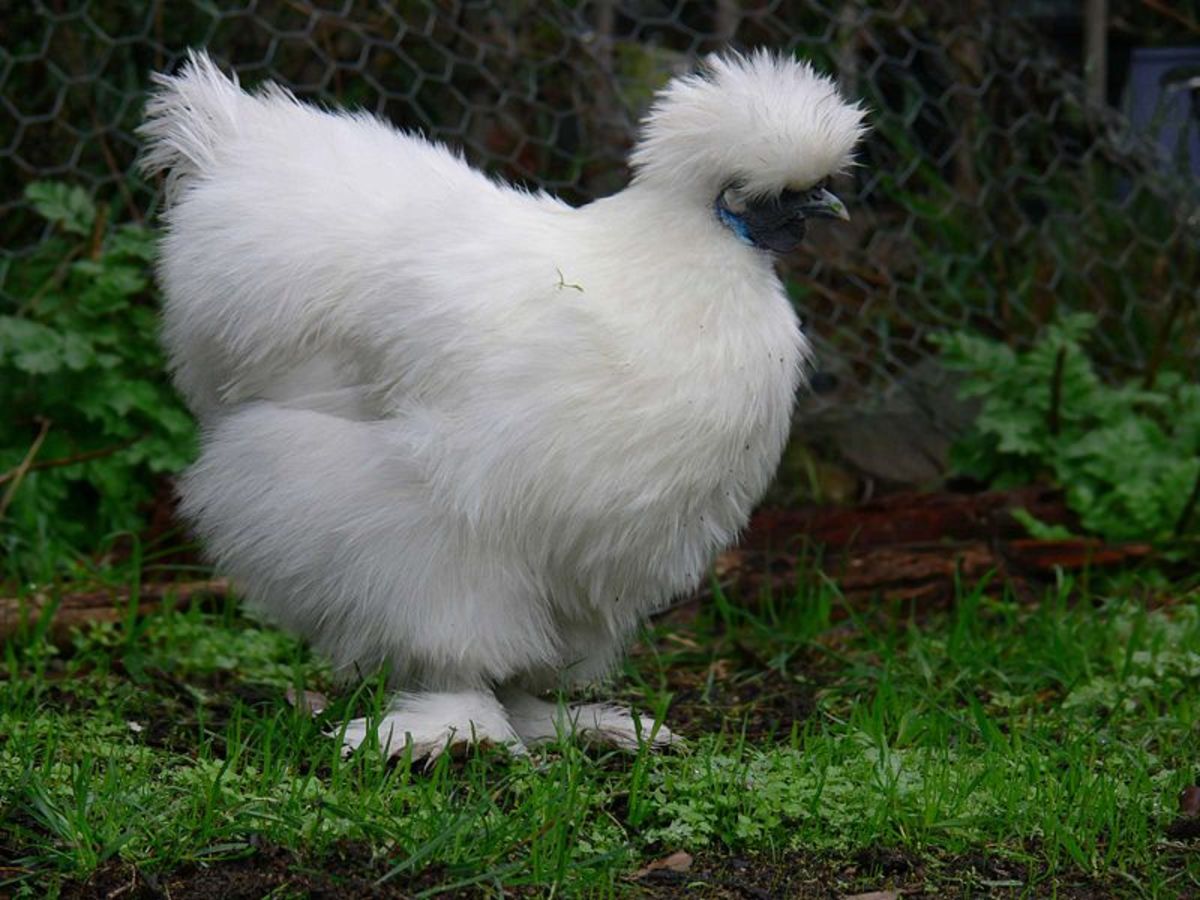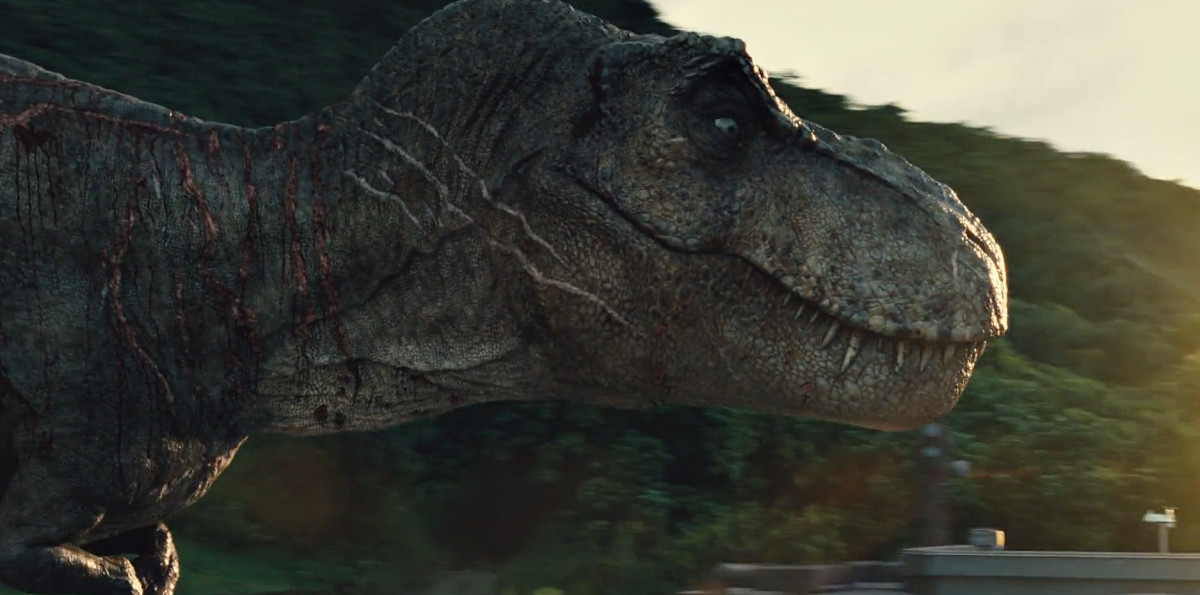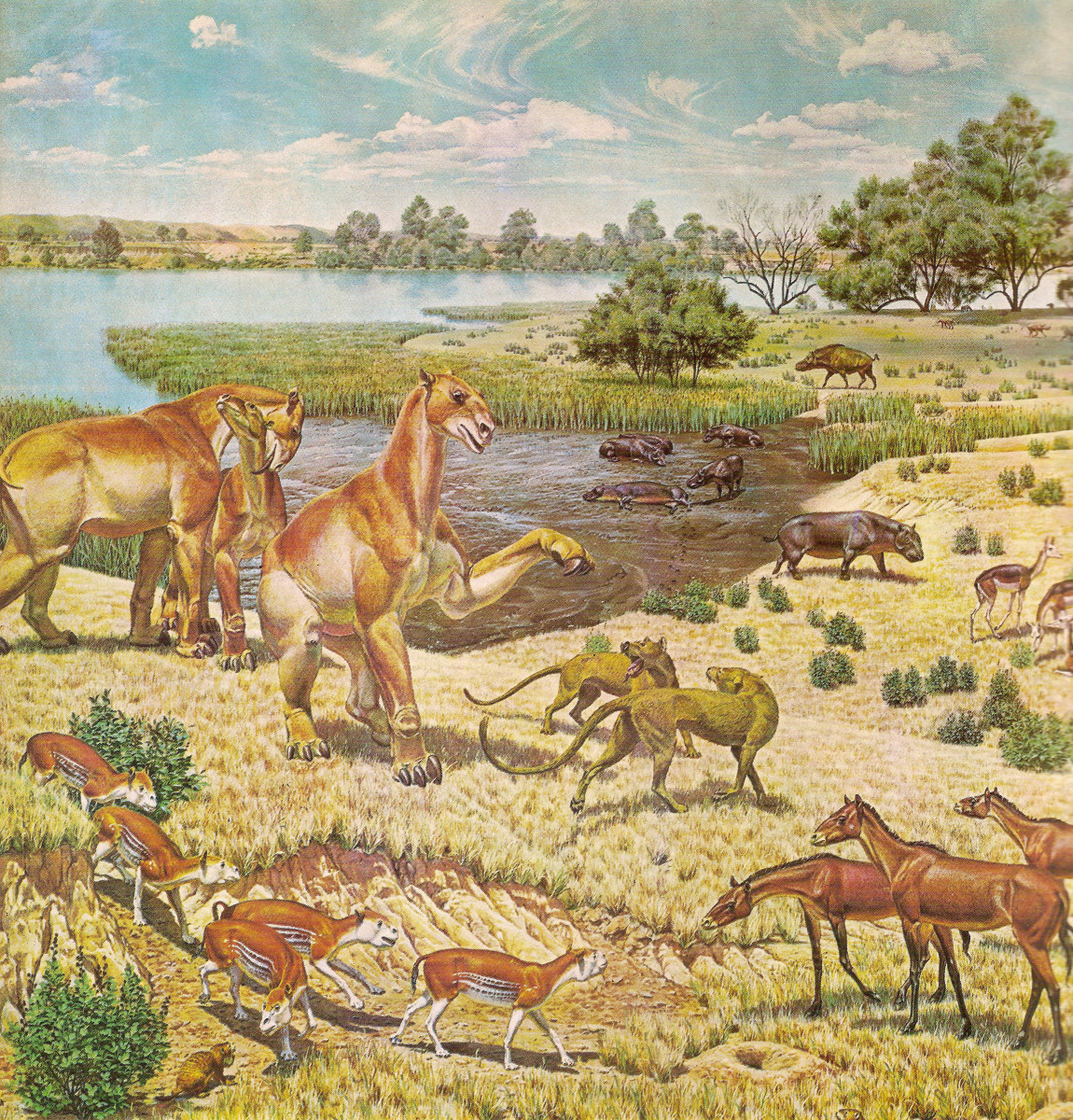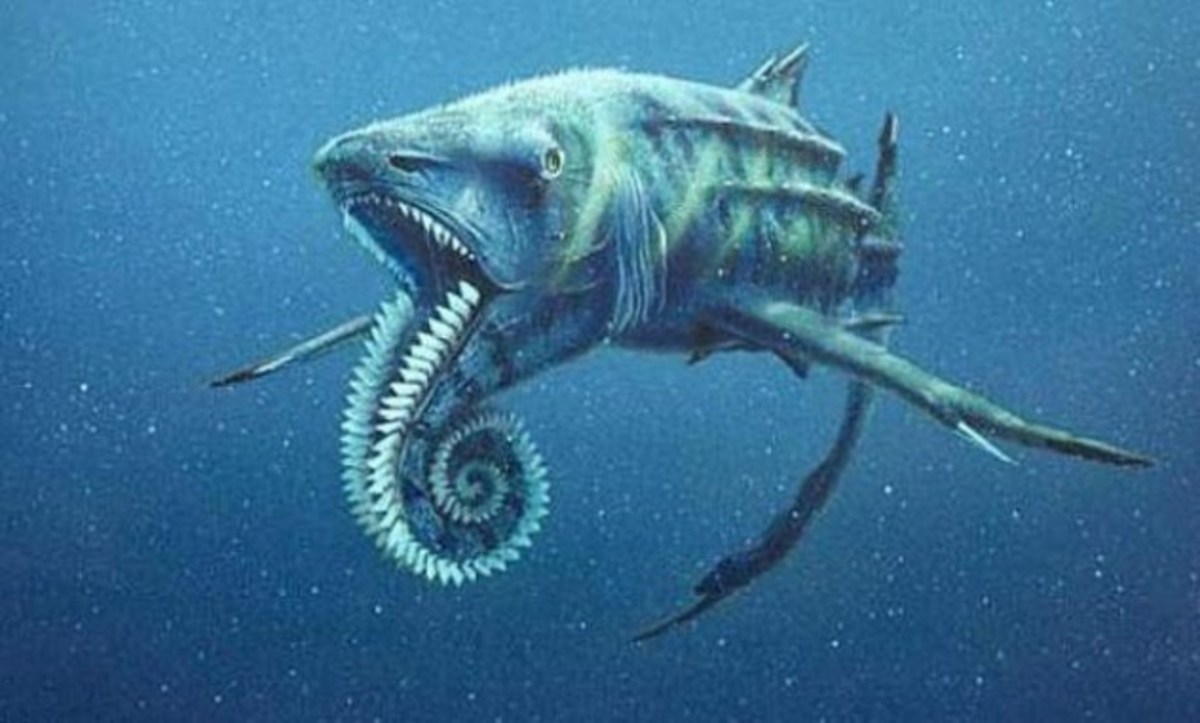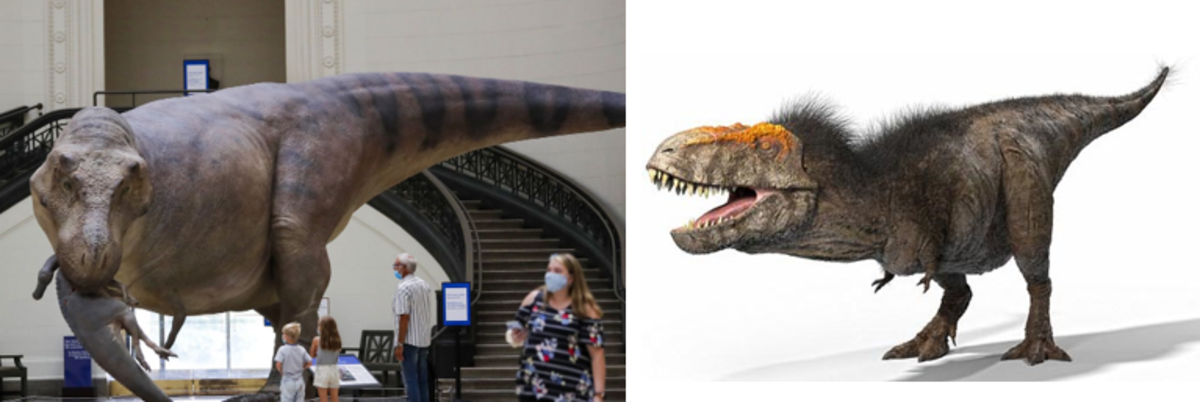- HubPages»
- Education and Science»
- Life Sciences»
- Paleontology»
- Prehistoric Life
Allosaurus
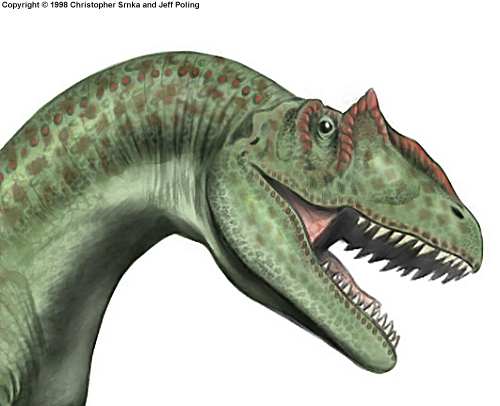
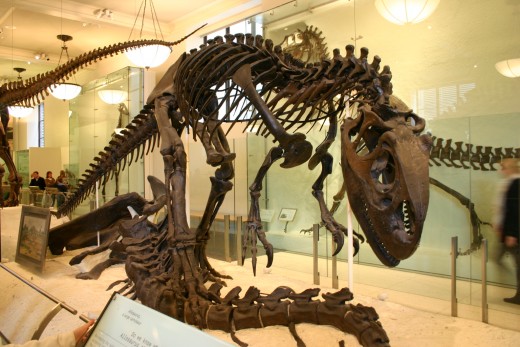
If Tyrannosaurus Rex was the king of the dinosaurs in the Cretaceous period, then Allosaurus was arguably the king of the Jurassic world. Allosaurus was a formidable predator, measuring between twenty-eight and forty feet long and weighing 1.5 to 5 tons depending on the species. It's skull was 4 feet long with a mouth full of 5 inch long dagger like teeth and topped off with two blunt horns above the eyes. Allosaurus is the archetypal big theropod with a large head, two long muscular back legs, and two powerful arms with three long fingers, tipped with hawk like claws on the ends. The skull indicates a hinged jaw, similar to certain snakes. This means that Allosaurus could open it's mouth extremely wide in order to take huge chunks of flesh from it's prey. The skeleton of Allosaurus like other theropods shows birdlike attributes, like a wishbone and neck vertebrae hollowed by air sacs.
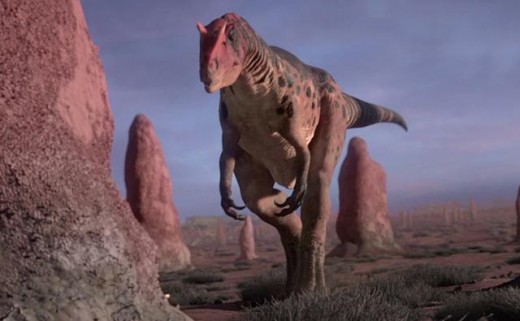
Discoveries and namings
Over sixty individuals have been found from juveniles to adults at a single site known as the Cleveland Lloyd Dinosaur Quarry in Emery County, Utah. Remains have also been discovered in Montana, Wyoming, South Dakota, Colorado, Oklahoma, and New Mexico in the United States, Portugal, and in Africa. Although Allosaurus was the most common large predator of it's time, it shared the Jurassic landscape with several other big theropods, including Ceratosaurus and the massive Torvosaurus. Seven species of allosaur have been described, although it is not clear how many there actually were. The seven officially characterized are A. amplexus,A. atrox, A. europaeus,the type species A. fragilis, the as-yet not formally described "A. jimmadseni", A. maximus,and A. tendagurensis. A. maximus which grew up to about 45 feet long and weighed 3-6 tons has been assigned to it's own species Saurophaganax.
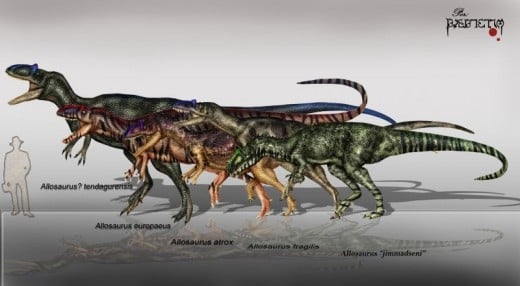
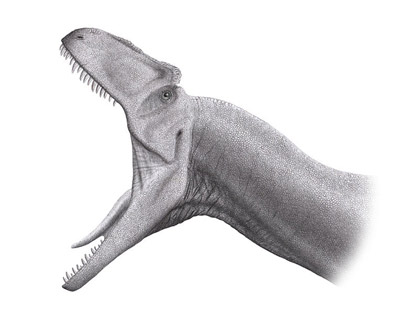
Food and hunting
Paleontologists can tell that Allosaurus was an active predator of large animals because there is striking evidence for allosaur attacks on Stegosaurs, Sauropods, and Camptosaurs. One particular discovery shows an Allosaurus tail vertebra with a partially healed puncture wound that fits a Stegosaurus tail spike or Thagomizer; Despite this, allosaurs were not afraid of Stegosaurus. A Stegosaur neck plate with a U-shaped wound has been discovered that correlates rather well with an Allosaurus snout which proves that these two animals engaged in deadly combat on a regular basis. Sauropods are also a favorite target for Allosaurus based on evidence of allosaur tooth marks on sauropod bones, especially young sauropods. Paleontologists believe Allosaurus' hunted in packs in order to bring down adult sauropods like Apatosaurus and Diplodicus. Camptosaurus was probably the most common dinosaur on the Jurassic North American plains. Camptosaurus was a predecessor to dinosaurs like Iguanadon and Hadrosaurus. Robert T. Bakker, comparing Allosaurus to Cenozoic sabre-toothed cats, found the same adaptations, such as a minimization of jaw muscles and enlargement in neck muscles, and the ability to open the jaws unusually wide. Once it's mouth was open, Allosaurus was then enabled to bring it's top jaw down like an ax into it's preys flesh.
Allosaurus facts
- Allosaurus Dinosaurs, facts, pictures, relative informations, dino allosaurus hunting habits, fossil
Allosaurus is a classic big theropod. It including Ceratosaurus and Torvosaurus.Its tailbone was caudal vertebra. Allosaurus length, extinction and it was featured in the BBC's Walking with Dinosaurs.
One of the most common predators of the Jurassic period.
- Allosaurus - Dinosaur Allosaurus Characteristics, Behavior and Habitat
One of the most common predators of the Jurassic period.
10 Facts About Allosaurus
- 10 Facts About Allosaurus - Allosaurus Facts
Allosaurus was one of the most common carnivorous dinosaurs of the Jurassic period. Here are 10 facts you may or may not have known about this agile hunter.

